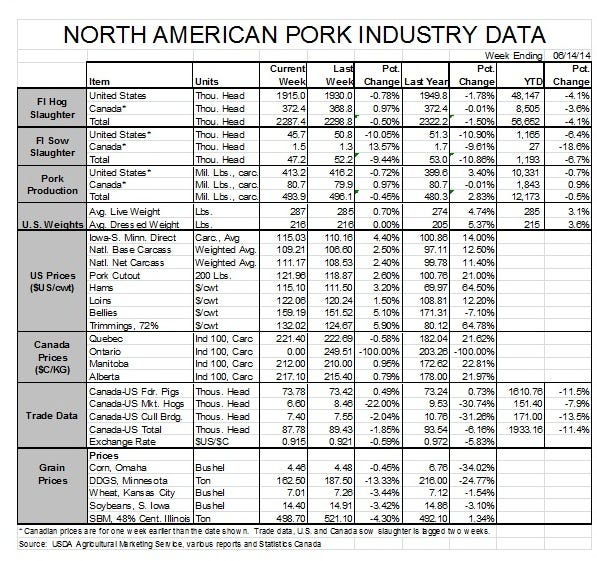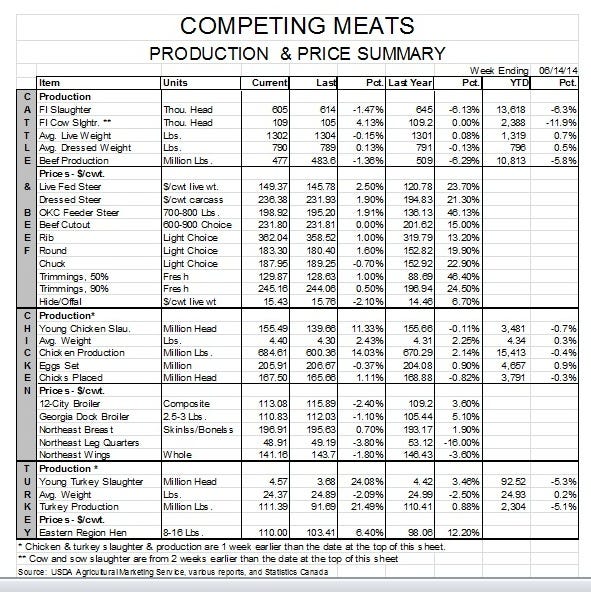Putting the Cargill Sow Housing Announcement in Perspective
June 16, 2014

Cargill announced last week that it intends to have all of its company-owned sows in group gestation by the end of 2015 and that contract growers must have Cargill-owned sows in group housing by the end of 2017.
Successful Farming’s 2013 Pork Powerhouses article listed Cargill as the nation’s eighth largest hog producer with 155,000 sows. That number is up from 136,000 sows in 2012. Cargill likely has more sows now as it has been slowly completing and populating its large production site near Dalhart, TX. A Minneapolis Star-Tribune article about the group gestation announcement claims that Cargill currently has 66,000 sows in the Texas panhandle.
Several headlines ballyhooed the role of consumer pressure in Cargill’s change. Cargill Pork President Mike Luker was quoted in the Des Moines Register saying, “. . . in the past few years growing public interest in the welfare related to animals raised for food has been expressed to our customers and the pork industry.” Look carefully at that statement and you do not see the word “consumers” anywhere. I note here that the Register did not include consumers in its headline or story. Other press outlets were not so careful.
I think the distinction is very important. Of particular note is the contrast between what we hear about “consumer” interest in pig welfare and pork demand over the past couple of years. While we are told that consumers are demanding pork raised in allegedly more humane ways, it appears that consumers are in fact demanding pork regardless of how it is raised. Real per capita expenditures for pork grew by 5.6% last year and are 6.1% higher through April. If there is so much concern, why is demand so much stronger even as the “debate” has raged?
Mr. Luker’s statement makes it clear that it is “public interest” that is pressuring Cargill’s customers. I would go further to insert the word “groups” in his statement and would note that “public interest groups” don’t always represent the public’s interest. Being the crass economist that I am, I would say the money trail would be much more effective in leading us to the true interests of the public as represented by individual people.
Producers and companies have long argued that sow housing is a matter of trade-offs. House sows in groups to allow them to express their natural behaviors and supposedly make them “more happy,” and you get all of the natural behaviors including aggression. House them in pens to keep them from expressing all of their natural behaviors such as aggression and you get sows that are less frequently injured but, by definition, not as free or, allegedly, happy. These arguments have usually been heard from the “keep-stalls-as-an-option” side, but accepting the tradeoff argument means one has to accept both outcomes and simply say, “That’s not what I would do,” when encountering the opposite decision.
One line in the Star-Tribune article struck me. Minnesota Pork Producers Association Executive Director David Preisler was quoted as saying, “Without really knowing how their costs will be recovered, it’s very difficult for farmers to be willing to make the change.” I think Mr. Preisler hit a key issue on the head here.
It is no accident, in my opinion, that the most noteworthy moves to group housing have been made by companies with large shares of vertical integration. Where independent producers cannot be guaranteed of recouping the costs of converting to group housing, Smithfield Foods and, now, Cargill can more readily cover those costs as they position—and price! -- “stall-free” product for those channels that have announced they will move to it.
And the retailers and restaurant chains that have made such announcements have put themselves squarely over a barrel. Not only do their collective announcements cover more product than is now – and may ever be – available, but just how do you think those animal lovers at HSUS will react if a company changes its’ mind? I don’t think they will be humane in the least, even to humans! Now I hope all of the companies do change their minds, but I certainly would not want to be first in line.
Is this the death knell for stalls? Not at all. The trade-offs are still true. Some producers are adamant that stalls are not just the most efficient system but also deliver the highest welfare. Others believe just the opposite.
I do think it is clear evidence that vertically integrated companies have a fundamentally different viewpoint. They are in positions to more easily guarantee a product’s production history and to price the product to capture enough premium to cover additional costs for space, equipment, sow death loss, etc.; at least as long as the announced “demand” for stall-free pork exceeds its actual supply.


You May Also Like



